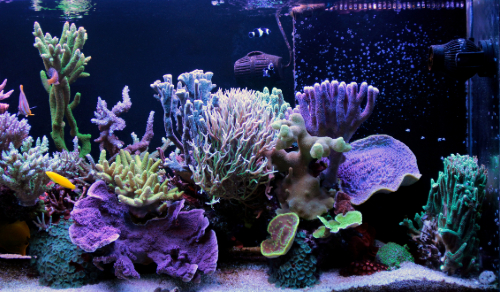From sandstone to the sea: exploring May's microbial discoveries
Posted on May 1, 2024 by Clare Baker
Each month, the Microbiology Society publishes the International Journal of Systematic and Evolutionary Microbiology, which details newly discovered species of bacteria, fungi and protists. Here are some of the new species that have been discovered and the places they've been found.
Even though the weather might not be showing it all the time, we are well on the way to the summer and of course, May’s New to Science!
Athens turned orange last month due to sands from the Sahara, so let’s start with a new microbe isolated from sandstone samples collected in the Sahara Desert of Southern Tunisia. Blastococcus brunescens is a novel Gram-positive bacterium which earns its name from brunescens, pertaining to the diffusible brown pigment produced by the type strain. B. brunescens joins the genus Blastococcus alongside 15 other species isolated from diverse environments like the seawater of the Baltic Sea, monument samples and of course, desert soils and sands. While there is still more to find out regarding the ecological roles of these bacteria, researchers are hopeful for potential biotechnological applications. Including bioremediation, bioleaching, agriculture, enzyme production and the generation of bioactive molecules.
Next up is two new bacteria isolated from chilled beef and chicken breast. Pseudomonas kulmbachensis and Pseudomonas paraveronii were isolated while researchers were investigating wet and dry age-related ripening of beef. The strains were isolated in 2011 from vacuum packed roast beef pieces purchased in Germany. This was not the only time these strains were isolated, however. Related second strains were also isolated from chilled chicken breasts packaged in 2020 during routine analysis of retail packaged meat samples.
Why should bacteria get all the attention? It’s about time we hear about yeasts! Four yeast strains representing a whole new species, Savitreea siamensis, were isolated in Thailand. Two of the strains were obtained from mangrove water samples. Another strain was found in a grease sample collected from a food waste trap in a cafeteria in Bangkok. The final strain was sampled from a fruiting body of Phallus mushroom collected in the Phatthalung province.

Let’s move from funny shaped mushrooms to something a bit prettier, shall we? Our next new microbe was found in a coral aquarium at Guangxi University, China. Rubellicoccus peritrichatus is a motile, aerobic, non-spore-forming strain isolated from crustose coralline algae. Our novel microbe not only represents a new species, but a new genus. It’s also an interesting addition to the phylum Verrucomicrobia, as they are commonly found in soil and guts and scarce in marine environments.
Finally, we come to Brooklawnia propionicigenes a facultatively anaerobic bacterial strain, isolated from a methanogenic reactor treating waste from cattle farms. Researchers identified that B. propionicigenes is a propionate-producing bacterium. Unsurprisingly, the ability to produce propionate is where B. propionicigenes earns its name. While propionate is important for sulphate and iron reduction processes, it does often accumulate in methanogenic reactors. This causes a decrease in pH and instability of the methanogenic process. Researchers are therefore keen to understand more about our novel bacterium and the production and oxidation of propionate in the future.


